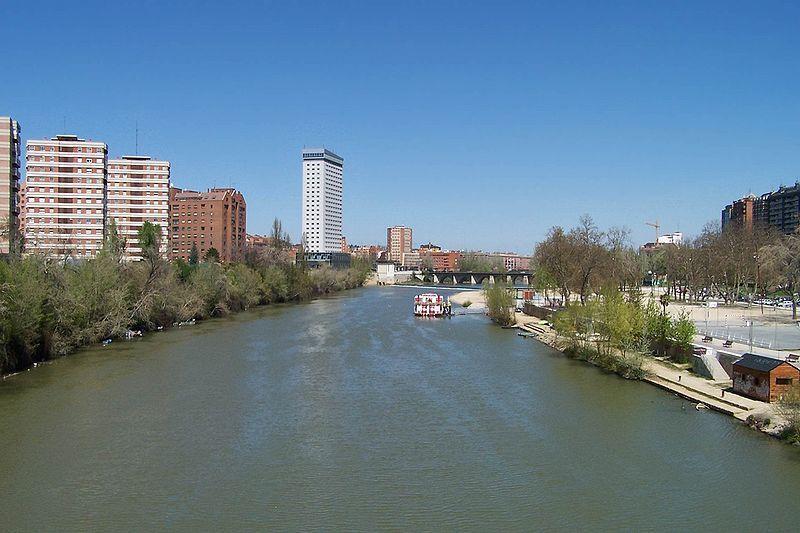Valladolid, Castela e Leão, Spain
Suggest Place to Visit
1935
Track to location with GPS |
 |
The origin of the city's name is not entirely clear; in the past it was believed that it came from Valledolit, Vallis Oleti or Valle de Olit, an Arab who supposedly owned the city;. Another possible origin could be Vallis olivetum; that is to say, Valley of the Olives, although given the extreme climate of the city it is not very likely that there were a large number of olive trees in the area. Another theory, more accepted than the previous ones, affirms that the origin of the word comes from the Celtic expression Vallis tolitum (Valley of Waters), since the Pisuerga river and the Esgueva river pass through the city, which before its canalization, in the nineteenth century, it was spread over several branches. Another theory, and this one more likely, is due to the people of Valladolid, which is believed to come from the valley of the sun or sunny valley; in the Middle Ages it was called Vallisoletum.
Finally, there is also the theory of Valladolid as a contraction of the valley of lid, a place, through its plain, where the pre-Roman clans and tribes met for their armed confrontations.
Foundation
There are indications that can be traced back to the Lower Paleolithic, essentially Acheulean, collected on the surface in the Quaternary terraces of the Pisuerga river, in Canterac (which is currently a large park located on the outskirts); but it cannot be said that the city had a stable occupation until the Middle Ages, which is possibly when the toponym that gives it its name arose.
Subsequent settlements in the current province of Valladolid date from pre-Roman times, existing in the area deposits of Vaccean peoples, who were settlers of a very advanced culture, and, like the rest of the Celtic peoples, came to the peninsula from northern Europe. The greatest exponent of this culture in the vicinity, which was devastated by the Romans, is Pincia (Pintia), in the current town of Padilla de Duero.
For years Valladolid was believed to be ancient Pincia, until archaeological excavations proved the true location of the Vaccea city. In several areas of the old part of the city, remains from Roman times have appeared, such as in the streets Angustias, Arribas, Juan Mambrilla and in those of the Empecinado and Padilla, where there is evidence of the appearance of several Roman mosaics. There have also been finds in peripheral points of the city; In the surroundings of the Monastery of Nuestra Señora de Prado, a Roman villa was discovered in the 1950s: the Roman Villa of Prado, which houses a large residential architectural complex, accompanied by mosaics. In fact, a large marble and limestone mosaic, the Mosaico de los cantharus (dated in the 4th century), presides over the hemicycle of the Cortes de Castilla y León (deposited by the Museum of Valladolid).
Repopulation and expansion
In the 11th century, during the repopulation of the Meseta, King Alfonso VI of León y Castilla entrusted the Count of Saldaña y Carrión, Pedro Ansúrez, and his wife, Doña Eylo, with its settlement. Until Alfonso VI granted the lordship of it to Count Pedro Ansúrez, in 1072, the growth of the city did not take place. Don Pedro had a palace built for himself and his wife, Doña Eylo, which is not preserved. He also built the Collegiate Church of Santa María (which gave it the rank of town) and the church of La Antigua. In 1208, King Alfonso VIII of Castile named it a courtly city, becoming the cultural center of Castile.
After the early death of Enrique I of Castile and the abdication of his mother, Fernando III the Saint was granted the kingdom of Castile in 1217, in an act held in the Plaza Mayor of Valladolid. During the 12th and 13th centuries, Valladolid experienced rapid growth, favored by the commercial privileges granted by the monarchs Alfonso VIII and Alfonso X El Sabio. Doña María de Molina, queen and regent of Castile for 30 years, established her residence there around 1300, greatly enlarging it. In 1346, Pope Clement VI granted the bull that allowed the creation of the University.
During these centuries, the city occasionally served as a royal residence and seat of the Cortes. The first Alcazarejo was transformed into the Real Alcazar, and Queen María de Molina had a palace built, which was her habitual residence. On October 19, 1469, Isabel de Castilla and Fernando de Aragón (who would become Fernando II of Aragón) celebrated their secret marriage at the Palacio de los Vivero (former site of the Chancery), and spent their honeymoon in the Castle of Fuensaldaña . Under the Catholic Monarchs, the city experienced a period of great university dynamism, culminating in the creation of the Colegio Mayor de Santa Cruz (by Cardinal Mendoza) and San Gregorio (by the Dominicans), which made Valladolid one of the hotbeds of the modern bureaucracy.
16th-18th centuries
In 1489 the court of Chancery was definitively established, and in 1500 that of the Inquisition, to judge acts of heresy, leading to the celebration of the Autos de Fe. In 1506 Christopher Columbus died in Valladolid, and his body was buried in the city, in the convent of San Francisco, a building where the Zorrilla Theater was later located, although it was later moved. Continuing with another navigator, in Valladolid Magellan signed the capitulations with King Carlos I of Spain, before beginning his western route to the Indies, on March 22, 1518.
For a time, the city lost its privileges, withdrawn by Emperor Carlos, son of Juana la Loca and Felipe el Hermoso, in retaliation against the comuneros who opposed his accession to the throne. In Villalar, every April 23, the Day of Castilla y León is celebrated, to remember what happened in this land. After the incident, Valladolid became one of the capitals of the Spanish Empire of Carlos I of Spain and V of Germany, gaining great political, judicial and financial importance.
Plan of Valladolid in 1738, work of the clerk Ventura Seco, redrawn by Juan Agapito y Revilla in 1901.
Democracy
Valladolid continues its growth with the arrival of democracy in Spain. With the first democratic municipal elections (1979), the Socialists came to the mayor's office (the socialist Tomás Rodríguez Bolaños remained as mayor from 1979 to 1995, the year in which the Popular Party won the elections, currently remaining in the mayor's office with Francisco Javier León de la Riva). In the 1980s new residential neighborhoods emerged (such as Parquesol), causing the city to grow in size. The city becomes the definitive seat of the executive (Junta) and legislative (Cortes) powers of Castilla y León by law passed in 1987, although the Cortes continued to be located in the Castle of Fuensaldaña until the inauguration in 2007 of its new headquarters in the Villa del Prado neighborhood of the city.
Valladolid is a Spanish city located in the northwest of the Iberian Peninsula, capital of the homonymous province, and seat of the Cortes and the Junta of the autonomous community of Castilla y León. According to data from the 2009 census, it has 317,864 inhabitants, which makes it the 13th most populated city in Spain and the first in the entire northwest of Spain. For its part, the metropolitan area of the city, made up of 23 municipalities, is the 20th in Spain, with a population of 410,534 inhabitants (INE 2008).
Although there are indications of settlements belonging to the Lower Palaeolithic, Valladolid did not have a stable population until the Middle Ages. During the repopulation of the Plateau, Alfonso VI entrusted Count Pedro Ansúrez with its settlement, granting him the lordship of it in 1072. From this date its growth began, endowing itself with different institutions; Collegiate Church, University or Alcázar Real. This allowed it to become the seat of the Castilian Court, and later, between 1601 and 1606, capital of the Spanish Empire, until the capital was finally transferred to Madrid. From then on, a period of decline began that would only be saved with the arrival of the railroad, in the 19th century, and with the industrialization of the city, already in the 20th century.
It preserves in its old town an interesting historical complex, made up of houses, palaces, churches, squares, avenues and parks, along with an important museum heritage. Among the cultural events held in the city, the Holy Week in Valladolid and the International Film Week of Valladolid stand out.
Location
The city of Valladolid is located in the northwestern part of the Iberian Peninsula. It is located in the center of the North Plateau, a division of the Central Plateau, which is why it presents a typical, flat landscape with little vegetation. The Valladolid relief is made up of a plain interrupted by small series of hills that give rise to a mountainous landscape of witness hills such as San Cristóbal (843 m), a few kilometers from the capital. The coordinates of the city are 41º 38´ N 4º 43´ W and the average height above sea level is 698 meters above sea level.
Weather
The climate of Valladolid is continental Mediterranean. Probably the Castilian saying ´´Nine months of winter and three of hell´´ characterizes it perfectly. This is due to the city's location in the center of the northern plateau, which, being completely surrounded by mountains, isolates it from the sea, forming an extreme and dry climate for what would be expected at almost 700 meters of altitude and only 190 kilometers. from the Cantabrian Sea in a straight line. The mountains that delimit the plateau retain the winds and the rains, except in the west, where the absence of large mountains leaves it open to the Atlantic Ocean and it is through here, through Portugal, where most of the rainfall that reaches Valladolid. Winds from the north arrive in Valladolid dry and cold, and those from the south are usually warm and humid, but it is from the West and Southwest where the rain usually reaches Valladolid. The prevailing winds in Valladolid are from the Southwest, and we see this reflected, for example, in the orientation of the Villanubla Airport runway.
Rainfall is distributed quite irregularly throughout the year, although there is a marked minimum in summer and a maximum in autumn and spring. Annual precipitation is 435 mm and the average relative humidity throughout the year is 65%. There are 2,534 hours of sunshine and 71 days of rain per year.
The temperatures are quite extreme, with quite significant differences between day and night, with an annual average of 12.3 ° C. Winters are cold with frequent fogs and frosts (61 days of frost on average). The city has 8 days of snow a year; Although heavy snowfalls are infrequent, due to the city's particular geographic location, they are not impossible either.
Hydrography
As indicated above, the most probable origin of the name of the city comes from the Celtic expression Vallis tolitum (Valley of Waters), and it is that Valladolid is framed in the confluence of the Pisuerga river with the Esgueva river. The latter crossed the city in two branches, until its canalization was carried out at the end of the 19th century. In addition, the Duero River also crosses the municipality through the nucleus of Puente Duero, south of Valladolid.
The Pisuerga, the main river in the city, currently offers various leisure and cultural options. The boat ´´The Legend of Pisuerga´´ allows you to take a trip down the river, from the Boarding Station, located in the Parque de las Moreras, downstream, to the neighboring town of Arroyo de la Encomienda. It is a boat of 25 meters long and 6 meters deep. During the journey you can closely observe the flora and fauna of the Pisuerga. In addition, Valladolid has an artificial beach, Playa de las Moreras, which allows Valladolid people to sunbathe right in the center and even take a dip in Pisuerga itself.
Valladolid also has two artificial channels: the Canal de Castilla, built between the middle of the 18th century and the first third of the 19th century to facilitate the transport of wheat from Castile to the northern ports; and the Duero Canal, built in the 19th century to ensure the capital's water supply and allow the creation of irrigated areas to the south of the city.
Sculpture [edit]
The sculpture in Valladolid is starred by works that represent illustrious characters who have been remembered in this way. Thus, in 1887, the standing statue of Miguel de Cervantes was installed in the University Square, with period costume, pen and book at the ready, made by Nicolás Fernández de la Oliva. The writer José Zorrilla also has a sculpture in the square that bears his name. The founder of the city, Count Pedro Ansúrez, has a statue in the center of the Plaza Mayor, made in 1903 by Aurelio Carretero. The Columbus Monument, the work of the artist Antonio Susillo, and inaugurated in 1905, recalls the figure of the discoverer.
Also noteworthy are the sculptures that adorn the Campo Grande de Valladolid, and near it, at the entrance to the Cavalry Academy, the monument to the Hunters of Alcántara, from 1931, the work of Mariano Benlliure.
At another point in the city, a statue of Felipe II presides over the Plaza de San Pablo; Made in 1964 by Federico Coullaut-Valera, it is a copy of the one in the Plaza de la Armería in Madrid and imitates the model of Pompeyo Leoni. At the entrance of Calle Cadenas de San Gregorio, the iron sculpture Lo deep is the air, by Eduardo Chillida, was installed in 1982, a tribute to the poet Jorge Guillén from Valladolid.
Parks and gardens
The oldest and most emblematic park in the city is Campo Grande; It is a large romantic garden, located in the heart of Valladolid, designed in its current appearance by Miguel Íscar, mayor of Valladolid between 1877 and 1880. It houses a great variety of trees that constitute a true botanical garden. They inhabit different birds and peacocks are famous and, recently, squirrels.
On the old north branch of the Esgueva, the Poniente gardens were built, also at the end of the 19th century:
«On the shore of the Esgueva a grove was built, then the channel narrowed, and there was an esplanade to which the City Council on April 10, 1863 agreed to be titled Plazuela del Poniente, precisely because it was at this wind of the city."
Juan Agapito and Revilla
It is a simple garden in the center of which there are two pergolas that house a small square where there is a fountain that recalls the work of the Valladolid writer Jorge Guillén.
Along the course of the Pisuerga there are also green areas. Starting from the north, the Ribera de Castilla Park (inaugurated on March 20, 1988), with an area of 12 hectares, is populated by different species of poplars, poplars or linden trees. Following the flow of the water, the Parque de las Moreras has several walks, sports areas and a river beach. Next to it is the Francisco Sabadell Rose Garden, a small garden exclusively made up of roses.
Other green areas are the Pinar de Antequera, the main natural resource of the Valladolid capital; the Las Norias de Santa Victoria park, which occupies the old facilities of the Santa Victoria sugar factory, the Victoria Botanical Garden, which has 30 different species of trees along with a sample of native species, the Fuente de la Salud Park from the Barrio Los Pajarillos, the Parque de Canterac and de la Paz in Las Delicias or the Parque del Mediodía in Parquesol.
SEMINCI
The Valladolid International Film Week (SEMINCI) is held annually at the end of October. Created in 1956 as "Valladolid Religious Film Week", it was held at Easter, evolving to become one of the main film festivals in Spain, with the objective of disseminating and promoting artistic category films that contribute to knowledge of world cinematography. The festival has its main headquarters at the Calderón Theater, where the opening gala, the screening of films from the Official Section and the closing gala are held, in which the Golden Spike, the festival's main award, is presented. Characters from the film world have paraded through SEMINCI, such as Ken Loach, Brad Pitt, Kenneth Branagh, Ang Lee, Sophia Loren, Julie Christie, John Cleese, María de Medeiros, Liv Ullmann, Abbas Kiarostami, Atom Egoyan or Mira Sorvino.
Language and literature
Valladolid is known as the birthplace of Spanish, it is reputed to be the place where the best Castilian is spoken. This fact is taking shape in the promotion of initiatives for the creation of centers specialized in the teaching of the Spanish language for foreigners. But despite this fame, the speech of Valladolid is characterized by diatopic features such as Leísmo, Laísmo and others typical of the northern Castilian dialect.
Valladolid hosted the II International Congress of the Spanish Language in 2001, which was held under the title "Spanish in the Information Society" between October 16 and 19 of that year.
Up to four Cervantes Awards, the highest literary distinction in the Spanish language, are linked to Valladolid: Miguel Delibes, Jorge Guillén (both natives of the city), Francisco Umbral and José Jiménez Lozano (residents for many years). Other prominent authors born in the city are José Zorrilla, Gaspar Núñez de Arce, Rosa Chacel, Gustavo Martín Garzo, Blas Pajarero or Fernando de Orbaneja.
Music and dance
The Miguel Delibes Cultural Center, inaugurated in 2007, is the headquarters of the Castilla y León Symphony Orchestra, the city's Professional Music Conservatory, the Higher School of Dramatic Art and the Professional School of Dance and Experimental Theater. In addition, it is equipped with an auditorium with capacity for 1,700 spectators, a room for chamber music and another for experimental theater.
The Calderón (remodeled in 1999) and Zorrilla (practically rebuilt between 2005 and 2009) theaters offer during their seasons a program that covers most of the performing and musical arts. There are numerous choral groups and other orchestras, such as the Young Symphony Orchestra or the Young University Orchestra. In addition, folk music groups such as Candeal come from the city, and in the field of modern music, the Celtas Cortos, a highly successful Celtic rock group in the 90s, and others such as Greta y los Garbo or Los themselves stand out.
Holy Week
Holy Week in Valladolid, with polychrome carvings of great artistic value by masters such as Juan de Juni, Gregorio Fernández or Alonso Berruguete, annually attracts visitors from all over Spain and the rest of the world.
During the Passion Week, and as long as there is no rain, the nineteen brotherhoods of Valladolid procession through the historic center of the city. The history of Holy Week in Valladolid dates back to the 15th century, although previously there were processions inside the convents, where the oldest brotherhoods such as Santa Vera Cruz, Angustias, La Piedad, La Pasión and Nuestro Padre Jesús Nazareno were born.
During Holy Week in Valladolid, one of the main exhibitions of religious imagery in the world can be seen in the streets, carvings that have allowed Holy Week in Valladolid to be declared of International Tourist Interest.
Steps such as the Virgen de las Angustias, one of the main carvings by Juan de Juni, La Sagrada Cena, by Juan Guraya, La Oración del Huerto, by Andrés de Solanes, El Señor Atado a la Columna and El Descentación, by Gregorio Fernández, o The Tears of San Pedro, by Pedro de Ávila, remind citizens of the link between religion and art.
Holy Week in Valladolid is not only distinguished by the artistic uniqueness of its steps but also by the sobriety, silence and respect that reigns in each act.
Within the Valladolid Passion Week, events such as the Proclamation and the Sermon of the Seven Words that transform the Plaza Mayor of Valladolid into a setting that seems to date back to the 16th century and the General Procession of the Sacred Passion of the Redeemer on Good Friday stand out. a journey from the Last Supper to the solitude of the Virgin and in which you can see the 32 most important sculptural ensembles.
Comments
We don´t have yet any comments about:
Valladolid
Valladolid
Be the first to leave a comment as it is very important to inform other people
Outros locais a visitar
Within a radius of 20 km from:Valladolid
Palacio del Conde de Gondomar |
| 3,6 Km |
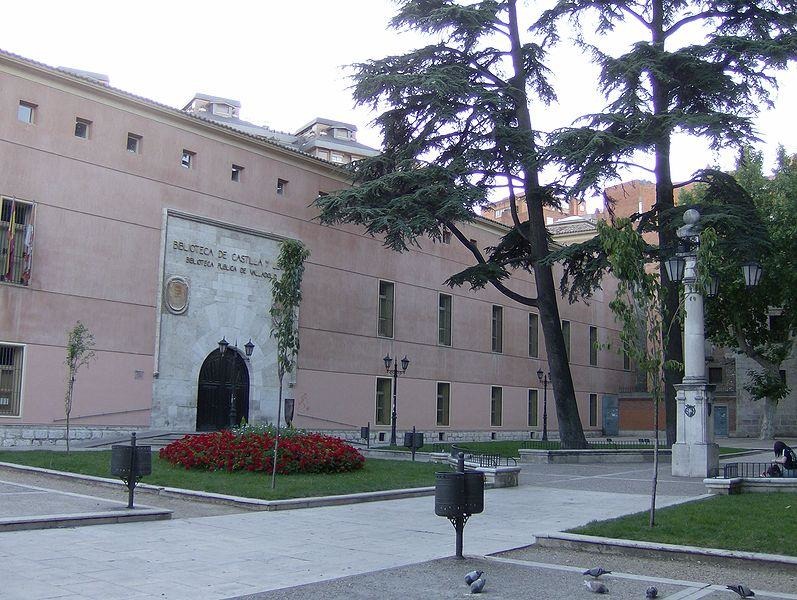 |
Palacio de los Condes de Benavente |
| 3,7 Km |
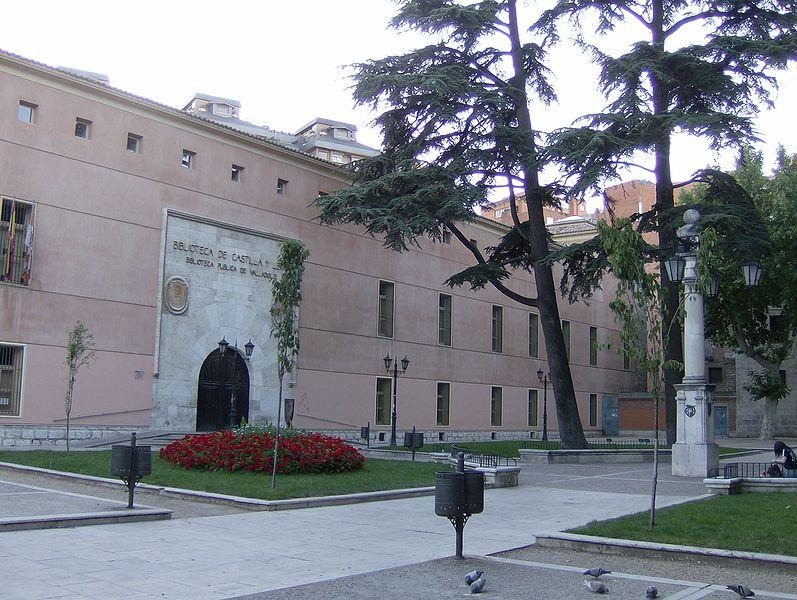 |
Palacio Real de Valladolid |
| 3,7 Km |
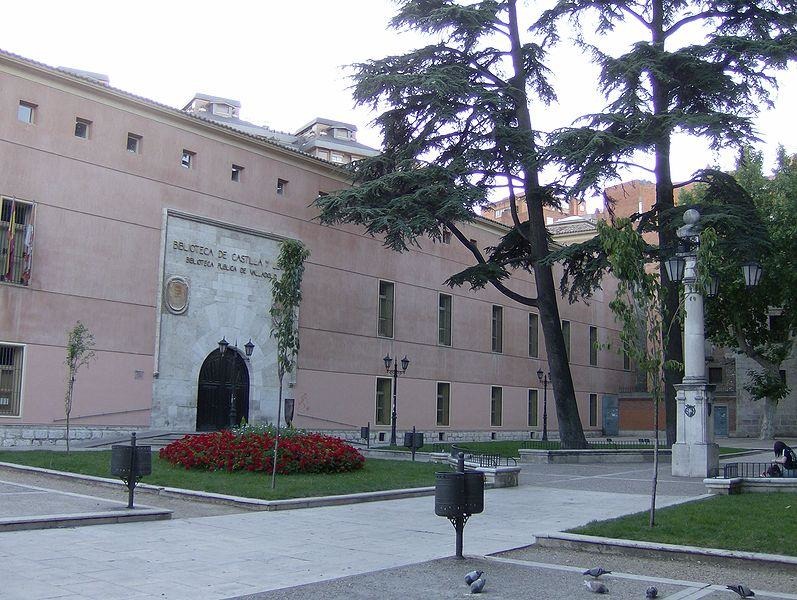 |
Catedral de Nuestra Señora de la Asunción de Valladolid |
| 4,1 Km |
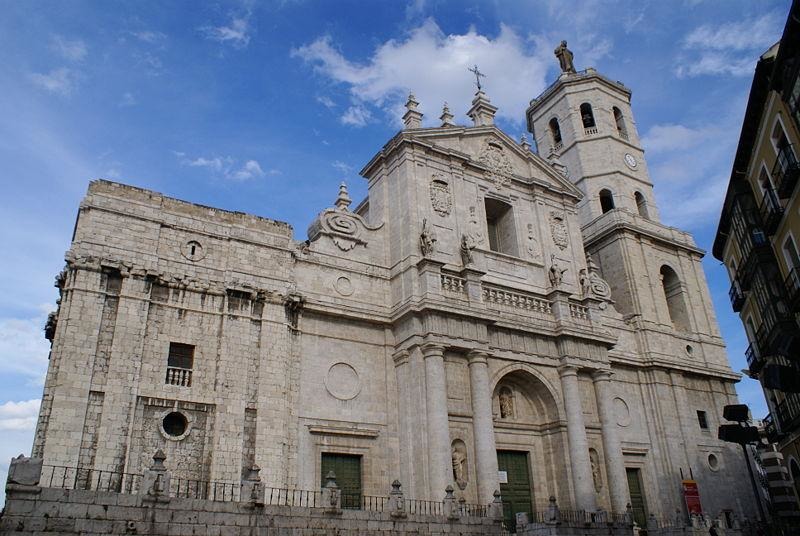 |
Plaza Mayor de Valladolid |
| 4,2 Km |
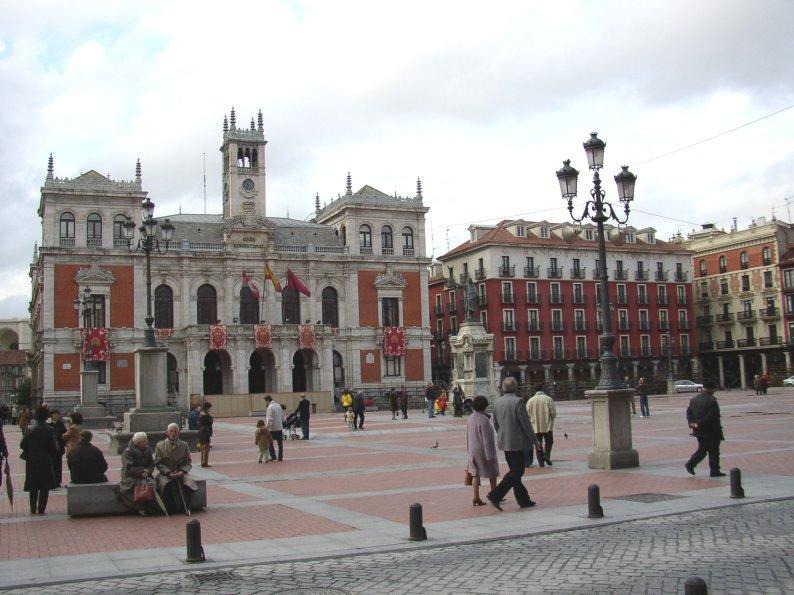 |
Castillo de Simancas |
| 14,0 Km |
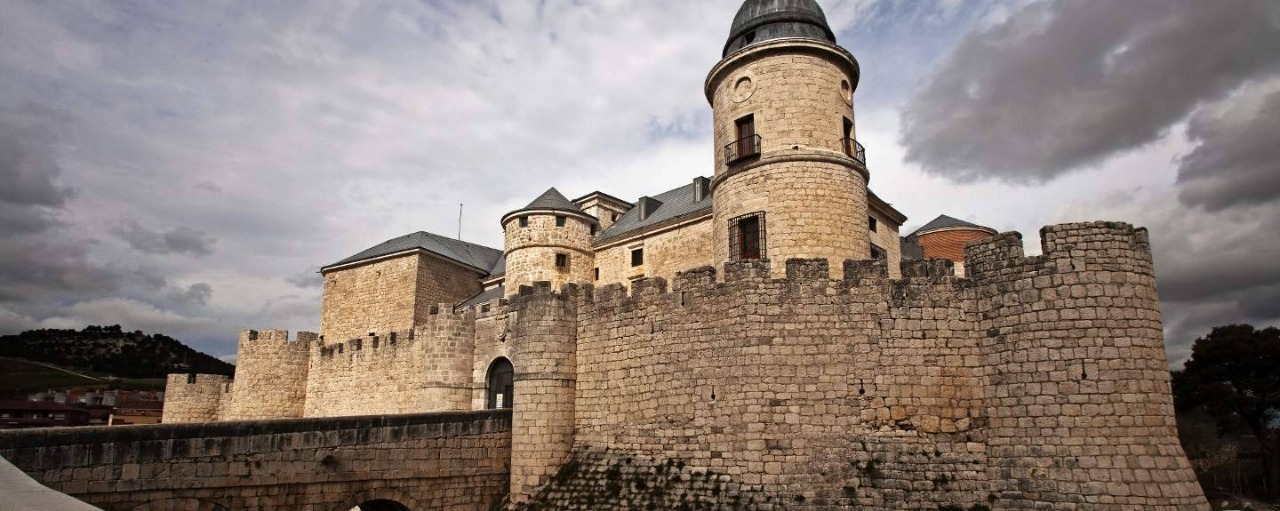 |
Hotel reservation near Valladolid within a radius of 20 km
Why to book with RUTAS TURISTICAS
The best prices
Our partnerships with the world´s largest operators offer research on the best market prices.
More options
At Rotas Turisticos you can book the hotel, buy the air ticket, book the transfer from the airport to the hotel and vice versa, book the local excursions, rent the car, take travel insurance and consult the places to visit and where to go.
Holiday Tips & Destinations
Hundreds of holiday destinations with all the options that allow you to easily choose the destination that best suits your dream vacation.
RUTAS TURISTICAS
Links


